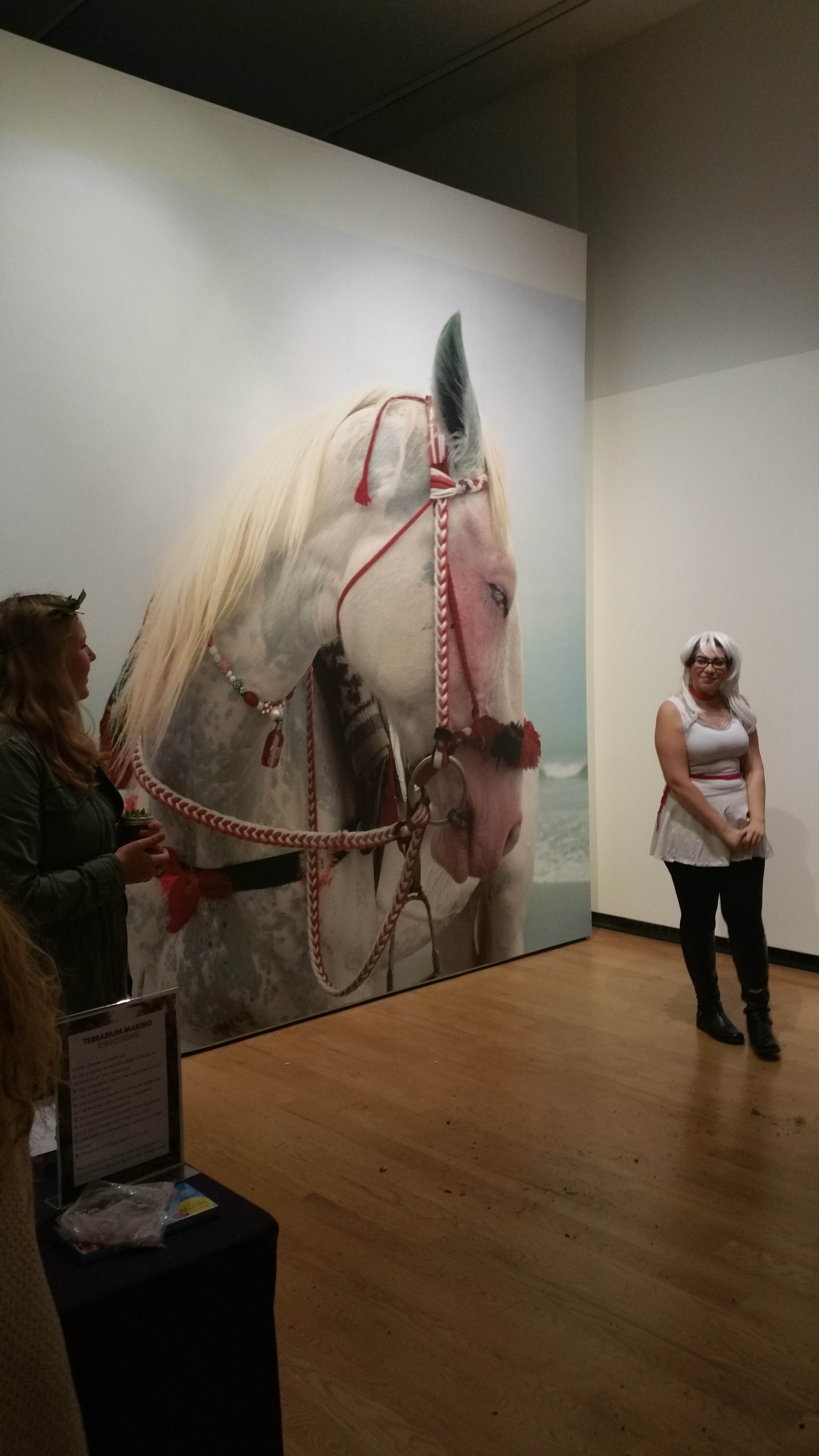

Members of the college community had the opportunity to see six new exhibits at the Mead Art Museum during a reception on Thursday, Sept. 8 celebrating the museum’s renovation. This is the first major renovation to the Mead under director David Little, who arrived at the museum in summer 2015. The last renovation of this scale took place six years ago.
“Accumulations: 5,000 Years of Objects, Fictions, and Conversations” examines the process of how a museum’s collection is built by displaying artworks that originated in different centuries and countries. According to Little, who was in charge of curating the exhibit, “Accumulations” is about “the materiality of the various objects that are on view, to remind the viewer that they start with the object and then have a process of interpretation.”
Little also said that the idea of situating audiences in new and different relations to artworks was a focus of the exhibit.
“I think we want to empower the audience more,” he said. “It seemed to me that there was an opportunity, with the changing demographics of the college, to try to present exhibitions that opened up the possibility of involving those audiences more.”
“Art From Africa: A Selection of Works Given by Amherst Collectors and Scholars” displays works of African art collected by two brothers who are alumni of the college.
“The American Collection: Two Centuries of Art at Amherst College” shows American works spanning the college’s history. The Mead was founded in 1949 primarily to house a major influx of donated American works to the college. Vanja Malloy, the curator of American art at the Mead, organized the exhibit. She said that one objective for the exhibit is to encourage not only conversation but also engagement with narratives, especially those that have been neglected by history.
“As a curator, there are a number of objectives,” Malloy said. “One is that you have very important artworks that really should be on display, because they’re historically important and they’re key works in the collection … but you also want to invite the idea of other narratives. One thing I notice, as a woman, is that there are a lot of male artists — where do women come into this discussion?”
Malloy made it a point to include a landscape painting by Robert Duncanson, an accomplished black painter associated with the Hudson River School.
“Rotherwas Project 1: Amanda Valdez, Ladies’ Night” is an exhibit of artworks by Amanda Valdez, an artist whose works engage with topics such as feminism and the materiality of fabrics. According to Little, this exhibit will be part of an ongoing series.
“From Russia With Love: Selections from the Thomas P. Whitney, Class of 1937, Collection of Russian Art” is the second major exhibition of the museum’s expansive Russian art collection. It was organized by Bettina Jungen, curator of Russian art.
Professor of Art History Nicola Courtright, who organized the exhibit “Precious: Finding the Wondrous in the Mead’s European Art Collection,” said the spaces were built to encourage curiosity and fascination among audiences. The exhibit has no numbers or labels on the walls, but is accompanied by a booklet containing Professor Courtright’s notes on the works.
“I wanted to make [the exhibit] into a space where the beholder would feel magnetically attracted, and want to stay and look and experience more the more they stayed,” Courtright said.
“Precious” is a collection of objects that attracted the fascination of European princes, scholars and merchants.
“I assembled these works that I often taught with in my sections and other works that students had written about in a Mellon colloquium on material culture,” Courtright said. “I wanted to see how these objects, these artworks and things, could resonate with each other and resonate with the viewer.”
In addition to displaying new exhibits, the museum also underwent architectural modifications with the goal of deepening audience participation in the exhibits, according to Little.
“I thought it was a good idea, as we physically opened up the place, that the space could be somewhere individuals could feel free to engage,” Little said.
Little and Malloy said that the renovation was carried out by an unusually small staff for its scale, and that the museum would look to increase its staff in coming years.